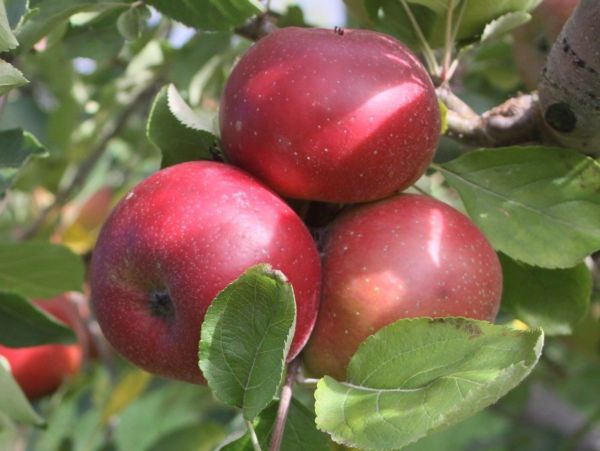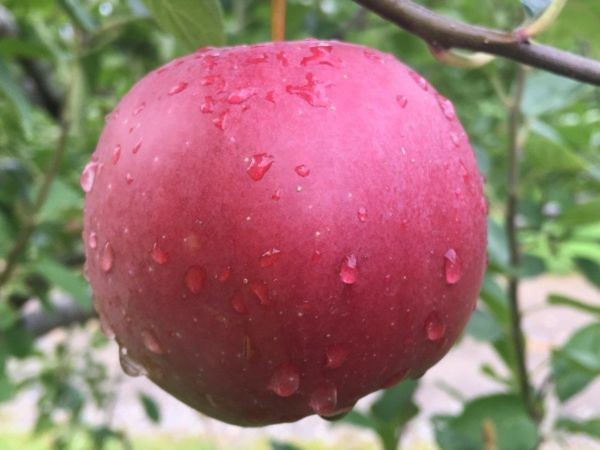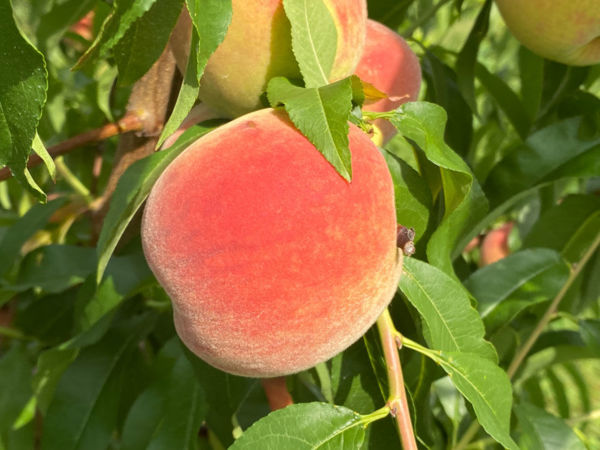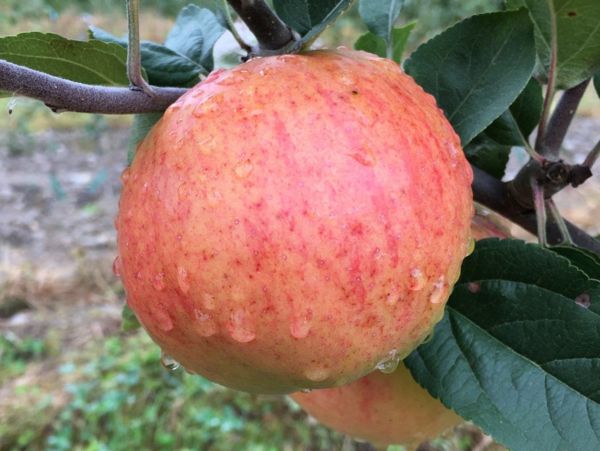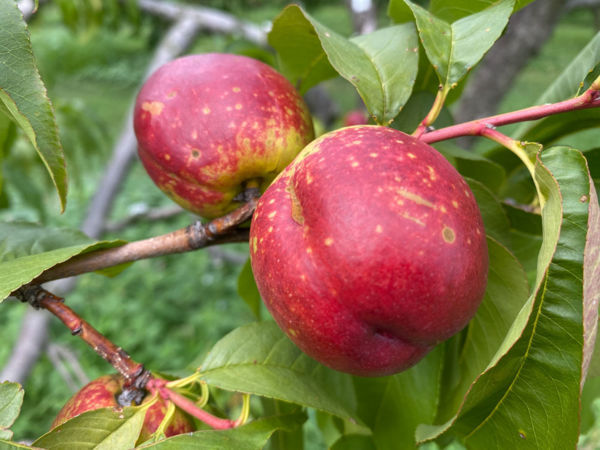An attractive, highly disease-resistant apple, ideal for organic growers.
Baldwin Apple on G.41 (Spring 2025)
You are viewing a tree that will ship in Spring 2025. You can also find trees for Spring 2024.
A beloved American heirloom dessert apple that is great for storage, baking, and juice. Also known as Woodpecker, Pecker, Butters.
The New England Farmer in 1885 wrote: “What the Concord is among grapes, what the Bartlett has been among pears, the Baldwin is among apples." This tree is cold hardy, long lived, and usually a productive and vigorous tree, but it can tend towards biennial or even triennial production. Heavy thinning and regular pruning will keep it annual. It is slow to bear and susceptible to apple scab and "Baldwin Spot" (bitter pit), but resistant to cedar-apple rust. It ripens in October in upstate New York and will keep till February. Baldwin is a triploid and it should not be used as a pollenizer; two other diploid varieties will be needed for full pollination.
The apple is smaller than McIntosh, medium sized, but dense and heavy, with yellow skin that is flushed and striped brick-red and bronze. It is very hard and thick skinned, making it a good apple for shipping. The flesh is crisp, juicy, with a sweet to sub-acid flavor, aromatic, and firm. It's a great pie apple and has been used by cider makers for over 200 years. The fruit contains 13.6% sugar, which ferments to 6% alcohol. Steve Selin at South Hill Cider here in Ithaca, NY praises the acid mouthfeel and the citrus and melon notes; he makes a single-variety cider from Baldwin.
Baldwin is also known as Woodpecker, Pecker and Butters. It was first discovered as a chance seedling on the farm of Mr. John Ball in Wilmington, Massachusetts, USA, 1740. The next owner of the property, William Butters, called the tree "Woodpecker" because it attracted so many of those birds, but others called it simply "Butters." It wasn't until the late 18th century that it received its modern name, when the famous engineer Loammi Baldwin recognized the apple's potential and promoted it.
This Loammi Baldwin was also second cousin of Johnny Appleseed, and apple geeks will recognize the tragic poetry of the familial relation: John Chapman (AKA Johnny Apppleseed), progenitor of seedling orchard plantations in the young United States, was second cousin of the man who marketed the exact variety that led to the replacement of so many of these seedling plantings. Baldwin was the most popular all-purpose dessert apple in the United States until a harsh winter in 1934-1935 killed off millions of apple trees in New Hampshire, Massachusetts, and Vermont. McIntosh stepped into the breach. The original tree died in the mid 1800s, but the site where it grew is now marked by a monument to the Baldwin apple.
The Fruit
Fruit Type
Category: Apple
Subcategory:
Heirloom, Cider
Fruit Uses & Storage
Uses: fresh eating, cider, baking, storage, jelly, sauce
Cider classification: sharp
Storage duration: three plus months (approximate, depending on storage conditions)
Fruit Appearance
Skin color: red
Flesh color: yellow
Fruit Origins
Parentage: chance seedling
Origin: Wilmington, Massachusetts
Introduced in: 1740
Introduced by: Loammi Baldwin
The Environment
Calendar & Geography
USDA zones: 5 - 7
Chill hours: Not yet determined
Ripening date: Oct 20 (approximate, in New York State) + 35 days after McIntosh
Tree Height & Spacing
glossary
Rootstock: G.41 Rootstock
Rootstock size class: Dwarf (30% of Standard)
Tree spacing (natural spread of tree): 8'
Good for wildlife planting? N
Diseases & Pests
glossary
Bitter Pit: Very Susceptible
Fireblight: Susceptible
Cedar-Apple Rust: Very Resistant
Powdery Mildew: Very Susceptible
Apple Scab: Susceptible
Pollination
Pollination Factors
glossary
Bloom group: 4
Is it self-fertile? N
Is it fertile? N
Ploidy: Triploid
Rootstock size class:
Dwarf (30% of Standard)
Pollination Partners
This table shows the first few results from a full search for pollenizers of Baldwin Apple on G.41. Please see our Pollenizer Search to run other queries and read how the application uses various factors. Also read more about fruit tree pollination.
See all pollination matches for Baldwin Apple on G.41
Featured Products
A few things we're loving right now...
A full-flavored, freestone white peach.
A traditional semisharp cider apple from Spain.
A widely-grown, large, yellow-fleshed nectarine.












